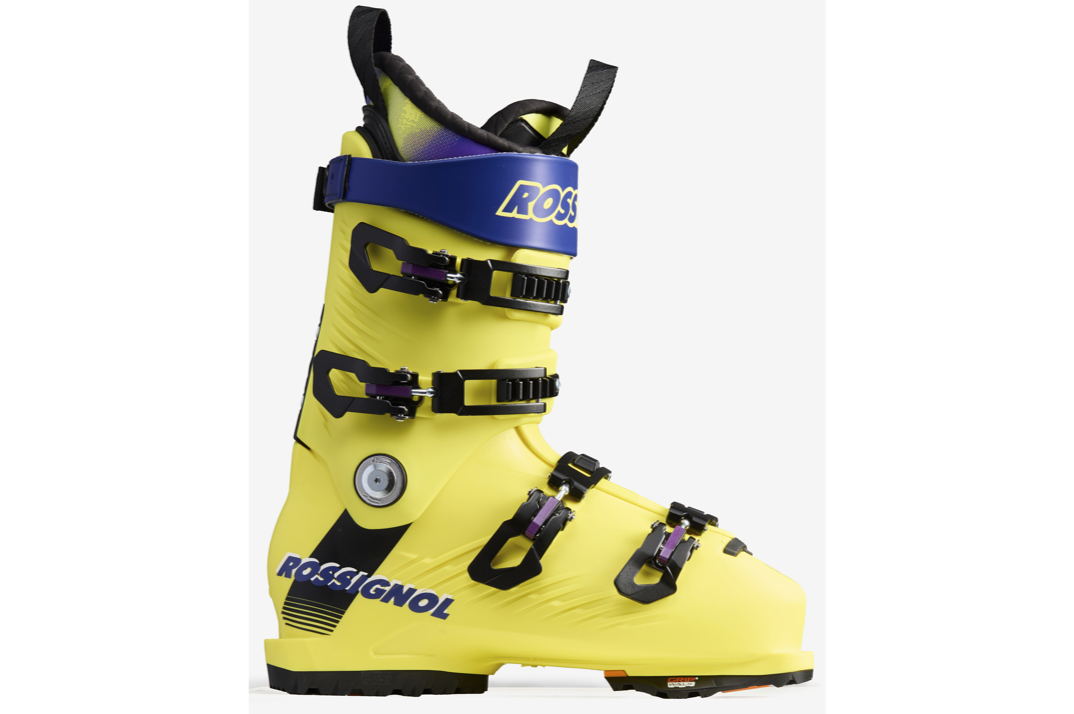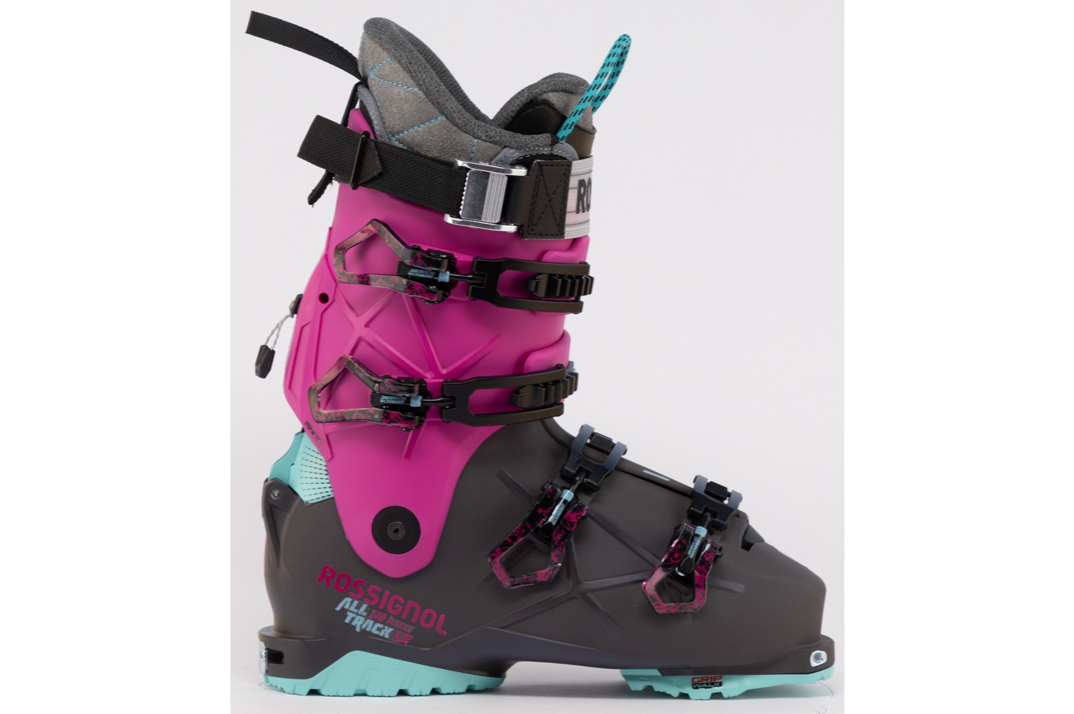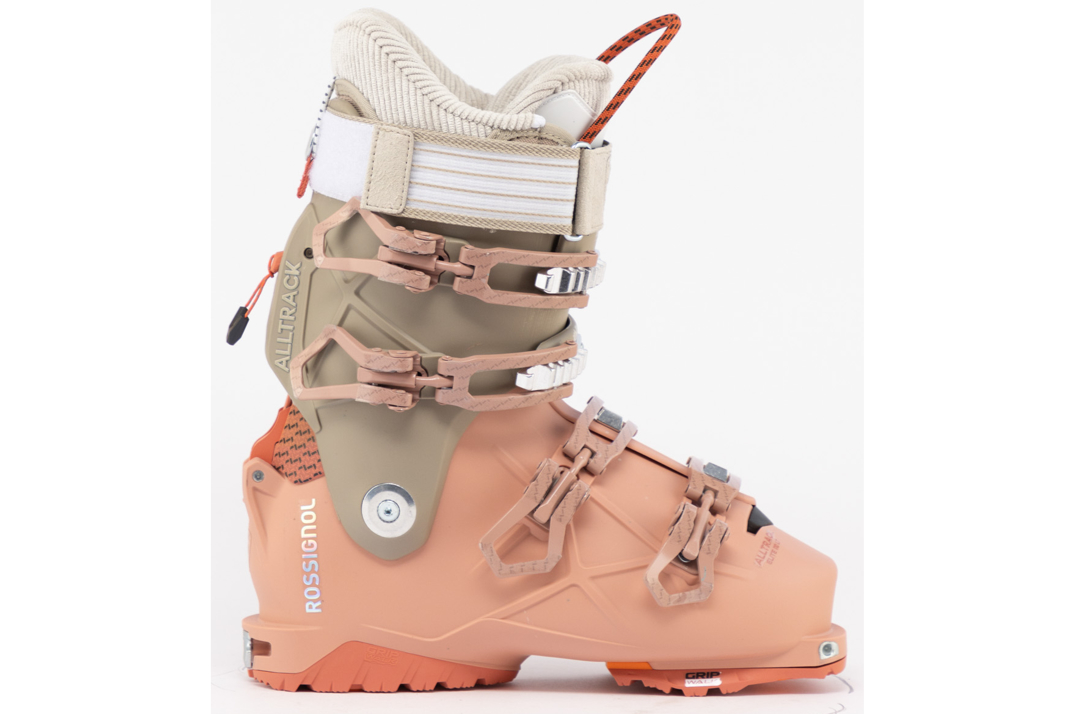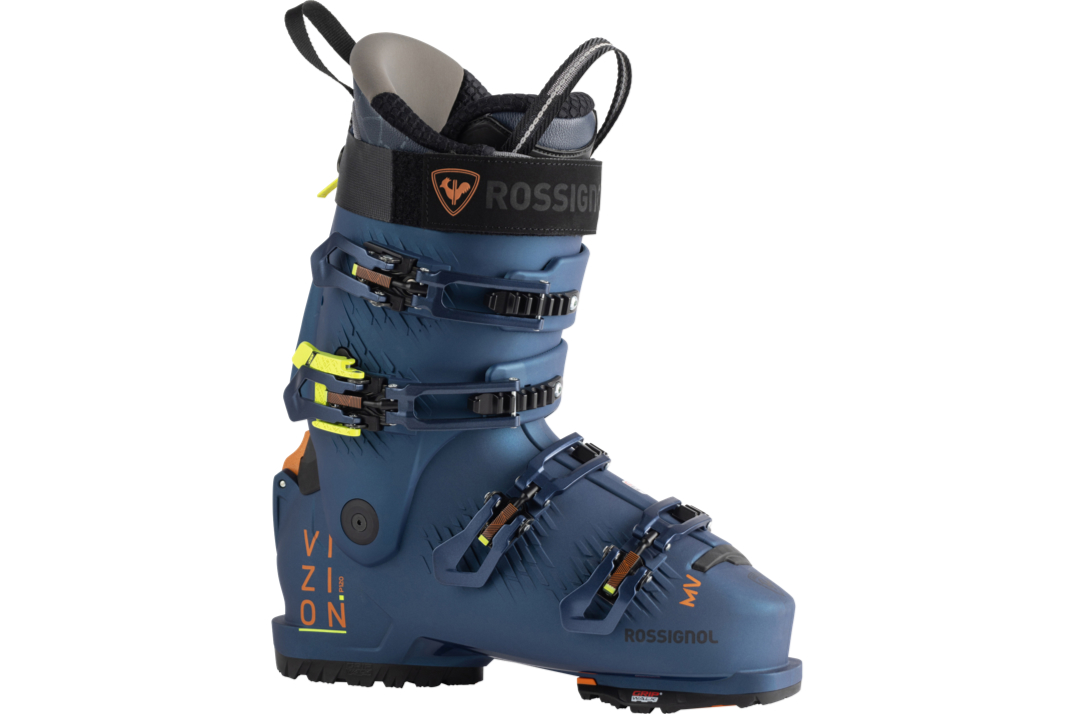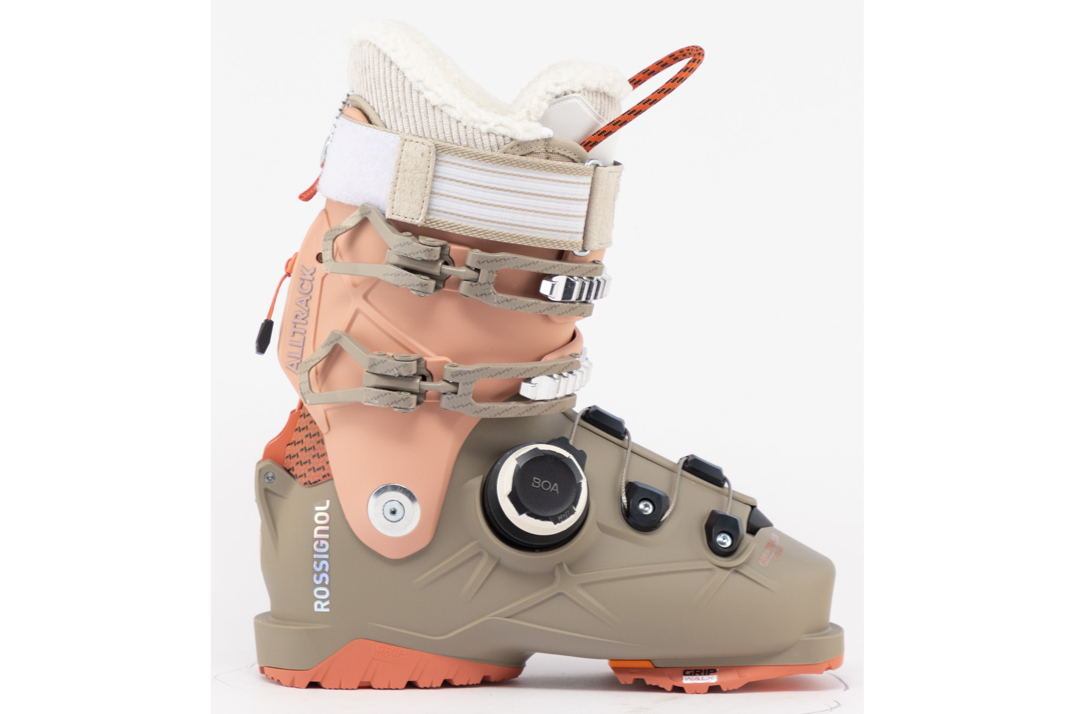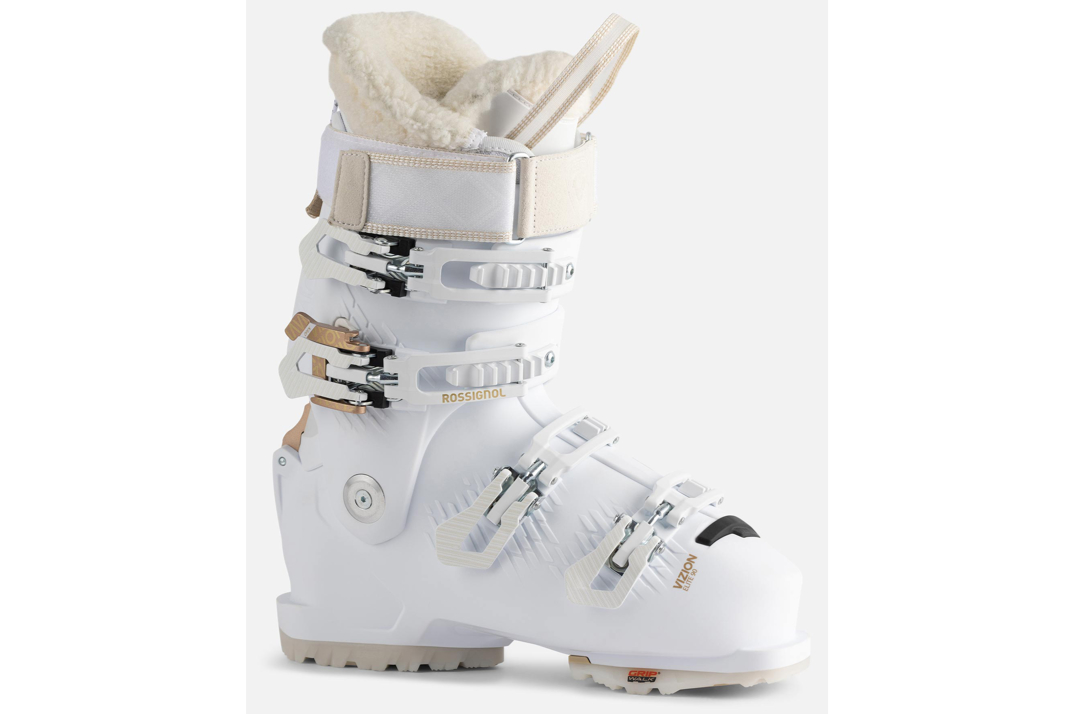With the arrival six years ago of the Alltrack Elite LT and Pro LT – for Lightweight Touring – Rossi complemented its Speed (standard 2-piece shells) and Track (similar shells, but with a hike mode) collections by adding a new shell design made for the touring market.
The LT series wasn’t built like the rest of the Rossi line. Rossi had been paring away excess material since the advent of its Alltrack series and it waffle-grid shell. The Alltrack LT shell advanced the art of shell wall minimization, plus it was made from Grilamid to keep the weight down to a svelte 1660g for both the 98mm Alltrack Elite LT and the 100mm Alltrack Pro 120 LT. By dropping the pivot point 6mm and opening up the spine, the upper cuff achieved 50o of ROM in hike mode.
The Alltrack LT’s represented a new branch of hybrids based on backcountry requirements but outfitted with Grip Walk soles so they could be used with (most) Alpine bindings. Six years ago, Rossi added the Alltrack Pro 130 GW to its collection of crossover BC/Alpine boots. It came ready for anything, as its GripWalk soles were outfitted with Dynafit-certified tech inserts.
Rossi’s Alpine line-up touched all the bases – narrow, medium, wide and extra-wide models for men and women, spanning all recreational flexes from 70 to 130, either with or without a hike mode (HM) – without leaving its home base of classic, 4-buckle, 2-piece, overlap shells.
Then in 2022/23, Rossignol completely re-imagined its core Alpine models, retaining only the Speed (for men) and Pure (women’s) series names and re-doing everything else. In this instance, “everything” is not marketing hyperbole. The shell, the cuff, the liner, the customization features and even how key components interact were all new.
From a performance standpoint, the pivotal new feature (pun intended) was where the cuff hinge on the Hi-Speed design was located, 1.2cm above the previous location. This may not sound like much, but it’s precisely where the Hero race boots hinge in order to provide race-caliber resistance to forward flex. Without further modification, the typical recreational skier wouldn’t be able to flex a Hi-Speed model in the flex he or she is accustomed to. So, Rossi moved the point of rotation forward a full centimeter, to give the skier a slight leverage advantage. The result is elite reaction to input in a chassis a recreational skier can manage.
The other major move 3 years ago can be best summed up in a single word, “customization.” There were adjustments for forward lean, forward flex, lateral cuff alignment and a heat-molding methodology that gave the bootfitter several options for personalizing the fit. The shell and cuff were every bit as new, using the Dual Core, multi-port injection technology perfected by sister boot brand Lange. By tactically softening the shell material in key zones, Dual Core boots facilitate ease of entry and exit without compromising world-class performance.
Were we to dive deeper into the details, we’d find the Hi-Speed stance position was more upright, as a true race boot would be. The shell and cuff were striated in target zones to limit distortion as these components are exercised during flex. Even the buckles were redesigned to make them sleeker and thinner.
The Hi-Speed series is still available in narrow (98mm), medium (100mm) and wide (102mm) lasts spread across the full spectrum of flex options. The Pure collection provides a comparable range for women.
Given that Rossi recently leaned on Lange to adopt Dual Core injection, one wonders how long it will take Rossignol to introduce a series of high-performance boots based on the well-received design of the new Lange Shadow…
In 2025, Rossignol took dead aim at the convenient-entry market that was once so well served by the single-buckle, rear-entry design and was recently revived by the Nordica HF series. At first glance, the Vizion boot looks for all the world like a conventional, 4-buckle, overlap boot. But on closer examination, the lower cuff buckle is connected to a cable that allows the spoiler to hinge rearward, creating an aperture you can drop your foot into as if you were putting on a slipper. Once you’re in, the double-function buckle closes the boot and pulls the steel-reinforced spine into skiing position.
If Vizion boots – which come in 98mm, 100mm and 102mm lasts – sound like they’re built more for convenience and comfort than for speed, well, they are. But their convenient-entry aspects don’t compromise performance as drastically as the other options currently available, which makes the Vizion design a godsend for those skiers who simply can’t get their feet into – or out of – the vise-like grip of a classic, 4-buckle, overlap shell.
The 2026 Season
Rossi’s Alltrack family has always incorporated a Hike Mode, as its raison d’être has been its on-trail/off-trail dual personality. The challenge for the savants in Rossi R&D was to differentiate the new Alltrack walk/ski mechanism from the clever, hands-free design of its own Vizion collection, introduced just last year. Both involve an articulating rear spoiler and a cable connected to a latch or lever that controls closure. Without getting too lost in their differences, the net effect is the Alltrack separates the hike function from buckle closure, so it can be worn closed in walk position. Another convenience advantage of the articulating cuff on the new Alltrack models is it can rotate rearward to create a wider aperture that’s easier to slip into; to get into ski position, just buckle up, flex forward and the cuff will lock into place.

